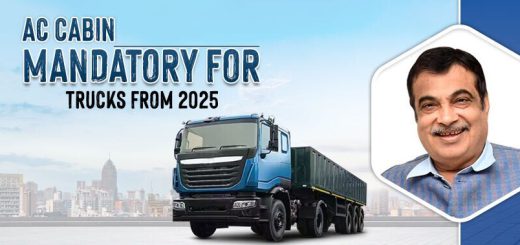New Data Reveals Rise in Truck Freight Rates in Major Cities
India’s trucking industry, the backbone of the country’s logistics sector, has witnessed a mixed trend in freight rates across major metropolitan cities in March 2024. According to data collated by the Centre for Monitoring Indian Economy (CMIE), the cost of transporting goods by truck saw an uptick of 1-2% in the southern cities of Bangalore and Chennai, while rates remained unchanged in other major hubs like Mumbai, Lucknow, Ahmedabad, Hyderabad, Trivandrum, and Kolkata.
The analysis focuses on the per-kilometer cost of transporting goods using 15-tonne trucks, calculated as the expense incurred from Delhi to various cities across the country. The Delhi-Chennai route witnessed a 6% increase, with the per-kilometer cost rising to Rs 96.3 in March 2024, compared to Rs 91 a year ago. Similarly, the Delhi-Kolkata rate rose by 3% to Rs 42.9, up from Rs 41.7 in March 2023. The cost of transporting goods to Bangalore increased by 1% to Rs 42.3, compared to Rs 41.8 the previous year.
Interestingly, freight rates from Delhi to Trivandrum saw a 4% decline, while the Delhi-Jaipur route experienced a substantial 10% drop during the same period. These fluctuations in freight rates can be attributed to various factors, including fuel prices, demand-supply dynamics, and operational costs.
Despite the mixed trend in freight rates, the demand for trucking services remains robust, as evidenced by the steady vehicle registrations for heavy goods vehicles. In March 2024, 26,898 heavy goods vehicles were registered, similar to the same month last year, indicating a consistent retail sales performance.
However, the Indian trucking industry faces several challenges that contribute to higher transportation costs. According to an EY report titled ‘Envisioning the Future of India @2047’, congestion resulting from inadequate road infrastructure and the lack of a city bypass network has significantly reduced the average speed of trucks in India. Indian trucks typically travel an average daily distance of 250 km to 400 km, significantly less than the 700 km to 800 km covered by trucks in the European Union and the United States.
Furthermore, India’s truck fleet is predominantly composed of smaller 16-ton to 25-ton vehicles, and the country has a high percentage of empty running, where trucks return without cargo after delivering their loads. These factors inflate the total cost of ownership, leading to a substantial increase in transportation costs for businesses and ultimately impacting the overall logistics efficiency of the nation.
To address these challenges, the Indian government has initiated various infrastructure projects, including the development of dedicated freight corridors and the upgrading of existing highways. Additionally, technological advancements in fleet management and route optimization can play a crucial role in improving operational efficiencies and reducing transportation costs in the long run.
Source By:- https://www.business-standard.com/




Recent Comments